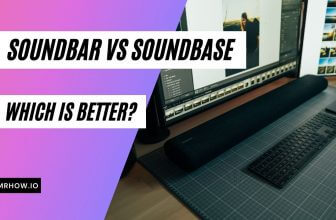In this post, we will be talking to buyers about DACs, what they can be used for and also provide some tips on how to choose the right DAC for your needs. If you are looking for a way to improve your audio or video experience, or if you need to convert digital data into an analog format, then a DAC may be the right solution for you.
What is DAC?

DAC, or digital-to-analog converter, is a type of electronic component that is used to change the format of a digital signal into an analog signal. DAC can be used for a variety of different applications, including audio playback, video processing, and data conversion.
Factors To Consider When Choosing a Good DAC
When looking for a DAC, there are a few factors you will need to consider. If you need a DAC to process an analog signal, make sure to choose one that is capable of doing so.
The decoding capabilities
Some DACs can only decode certain types of audio files, while others can decode a wider range of files. If you have a collection of audio files that you want to play back, make sure to choose a DAC that is capable of decoding them.
The bit rates, bit depth and sample rate
The bit depth determines the number of bits that are used to represent each sample of audio, while the sampling rate determines how many times per second the audio is sampled. The higher the bit depth and sampling rate, the better the quality of the audio.

- Bit rates are the number of bits that are transmitted over a given period of time. This can be measured in bits per second (bps), kilobits per second (Kbps), or megabits per second (Mbps). Bit rates are used to measure the speed of data transmission, and higher bit rates allow for faster transmission speeds.
- Sample rate is the number of samples per second that are used to represent a signal. It is also known as sampling frequency.
- Bit depth is the number of bits used to represent a single sample in an audio or video signal. For example, CD-quality audiois sampled at 44.1 kHz, which means that each sample is represented by 44.1 thousand bits. This bit depth can be measured in either 8-bit or 16-bit increments, so a CD-quality signal has a bit depth of 16 bits.
The form factor of the DAC
Some DACs are small and portable, while others are larger and more bulky. If you need a DAC that is portable, make sure to choose one that is small and lightweight.
The other components and parts of the DAC

When looking for a DAC, the first thing you’ll want to consider is the DAC chip that’s used. This is the heart of the converter and is responsible for taking the digital signal and turning it into an analog signal that can be played through your speakers.
However, that’s not to say that all DACs using these chips will sound the same. Other important factors to consider when choosing a DAC include the quality of the components and parts used.
Different manufacturers can use the same DAC chip, but because of their different choices in design and build, the resulting DAC can have very different qualities. So, it’s not just about the chip itself, but the overall components and parts that make up the DAC.
When looking for a DAC, it’s important to keep all of these things in mind. The quality of the DAC chip is obviously very important, but the other components and parts also play a role in determining the overall quality of the converter. So, make sure to do your research and find the DAC that’s best suited for your needs.
The price of the DAC
DACs can range in price from a few hundreds of dollars to several thousand dollars. Choose the DAC that fits your budget and meets your needs.
Concluson
When looking for a DAC, there are a few factors you will need to consider, such as the decoding capabilities of the DAC, the bit rates, bit depth and sample rate of the DAC, and the form factor of the DAC. The other components and parts of the DAC are also important to consider, as is the price of the DAC. So, make sure to do your research and find the DAC that’s best suited for your needs.
Thank you for reading! We hope this article has been helpful in explaining some of the important factors to consider when choosing a DAC.






